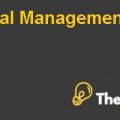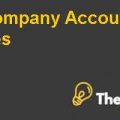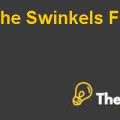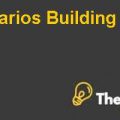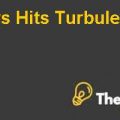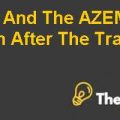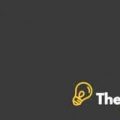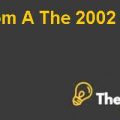
1.1 PROFITABILITY
1.1.1 GROSS PROFIT MARGIN
Gross profit margin for the year 2010 and 2009 are 38% and 28%. This figure shows a positive sign for the company because their profit margin contribution against their cost is effective and it is high. 38% the company generate profit margin against its total cost of goods sold for the year 2010 and 28% for the period 2009.
1.1.2 OPERATING MARGIN
This ratio is vital because this ratio indicates the company pricing strategy towards their goods and services it helps the strategy of pricing and it comes after the company variable and fixed cost. 14% and -8% has been calculated for the year 2010 and 2009. We can see Negative figure for the year 2009 which means that the company is in the loss condition for the year 2009. 14% shows that the company must have contributed 0.14 margin per unit of sales.
1.1.3 NET PROFIT MARGIN
This ratio helps in identifying the high net profit margins for the previous years and then the strategies are made with respect to the performance of this ratio. 9.82% and 6.09% net profit margin has been calculated for the years 2010 and 2009 respectively which means that Applied Material Inc. has generated 9.82% per unit of sale.
1.1.4 RETURN ON SHAREHOLDER EQUITY
5% ratio has been calculated for the year 2010 which means that Applied Material Inc. must have generated 5% profit for the money which the shareholders invested and 2% required for the year 2009 to meet the shareholders’ investment.
1.2 LEVERAGE (CAPITAL STRUCTURE)
1.2.1 DEBT TO TOTAL ASSETS
2.94% and 3.55% Debt to total assets has been calculated for the fiscal year 2010 and 2009. 2.94% ratio is pretty much satisfactory as compared to 3.55% for the year 2009 because the company has more efficiency in leverage.
1.2.2 DEBT TO COMMON EQUITY
1.3 And 1.4 ratio has been calculated Debt to common equity ratio for the year 2010 and 2009 which suggest that the company has an aggressive focus in financing to its growth with debt for the both fiscal years.
1.3 MARKET
1.3.1 PRICE TO EARNINGS (P/E)
2% and -4% price to earnings ratio has been calculated for the year 2010 and 2009. In 2009, Applied material Inc. bear some losses that resulted in negative effect on the investors. In 2010 Applied Material Inc. developed their trust to their investors and stabilized the position of the company.
1.3.2 PRICE TO BOOK VALUE
13 and 11 ratio has been calculated for the year 2010 and 2009. The company is overstated means company is generating high return and for both fiscal years. For the period 2009 it is slightly lower than compared to the fiscal year 2010.
1.3.3 STOCK YIELD
1.17% and 1.13% stock yield has been calculated for the fiscal year 2010 and 2009 respectively. This ratio measures the investors return. In 2009 the stock yield is 1.13% which is lower than 1.17% for the year 2010 it also means that it a high share price that resulted in creating low attraction of the investors to invest in stock.
2 APPENDIX 5 ANALYZING SEGMENTAL DATA
2.1 Contribution by segment to revenue
Due to the change in trends and other economic factors Sporting gear and Equipment is the largest revenue maker and has large contribution by segment to revenue. This segment is contributing more to its total revenue. Secondly, sporting apparel is the second largest contribution towards the revenue over the three year period from 2011-2013. Footwear has less contribution towards the revenue for the past three years.
2.2 Contribution by segment to operating profit
Table 5A.2 reveals the contribution margin by segment to operating profit/loss. As table 5A.1 suggests the largest contribution is done by sporting gear and equipment towards operating profit. It generated the highest operating profit in 2013 and 2011. Sporting apparel is the second largest contributor towards operating profit and their high operating profit was in the year 2012. Footwear contributed the least contribution related to operating profit all the three years but in 2012 it suffered a loss. The management of Sage Inc. has made strategy for footwear to decrease its retail prices and unit sales to overcome it in 2013.
2.3 Operating profit margin by segment
Operating profit margin is presented for each segment that shows a percent of every sale that is converted into profit before taxes. Sporting apparel has the highest operating profit in its all three years and in 2013 its operating profit margin’s value was at the peak. Sporting gear and equipment has second largest contribution towards operating profit margin. Footwear is improving in 2013 after its negative contribution in 2012..............................
This is just a sample partial case solution. Please place the order on the website to order your own originally done case solution.

